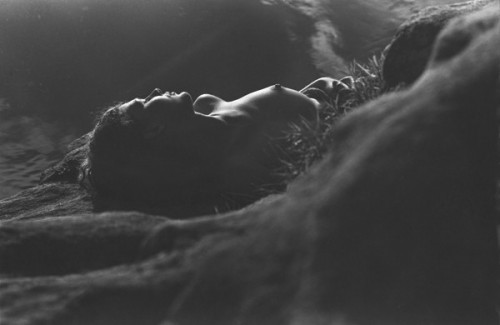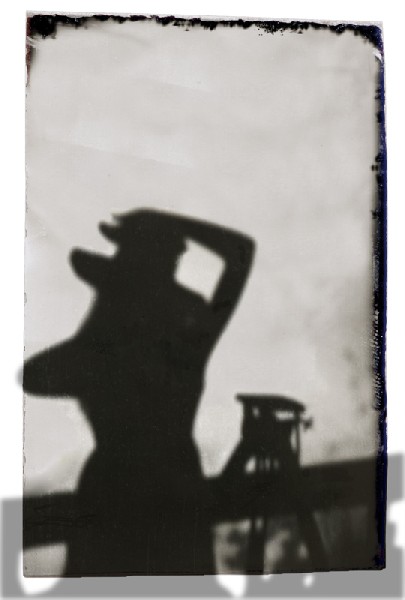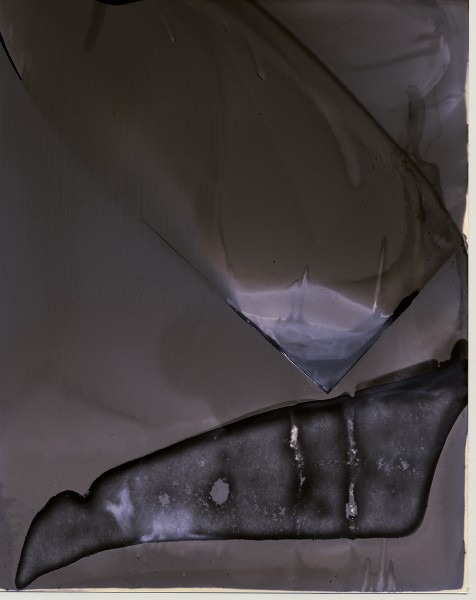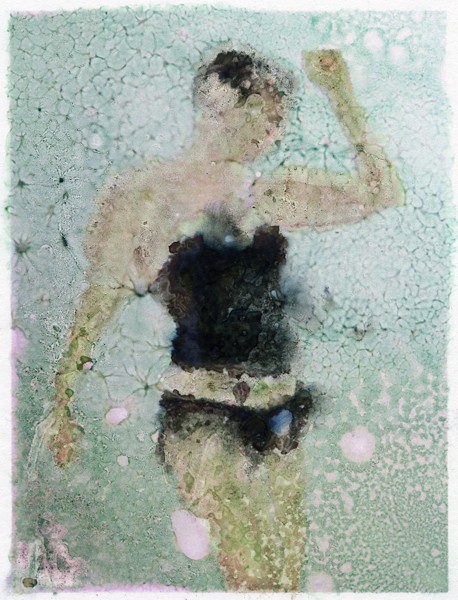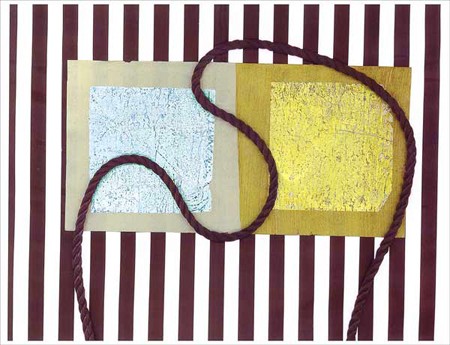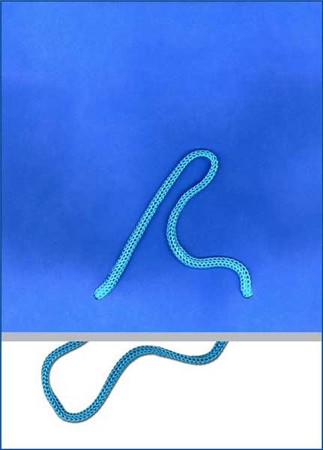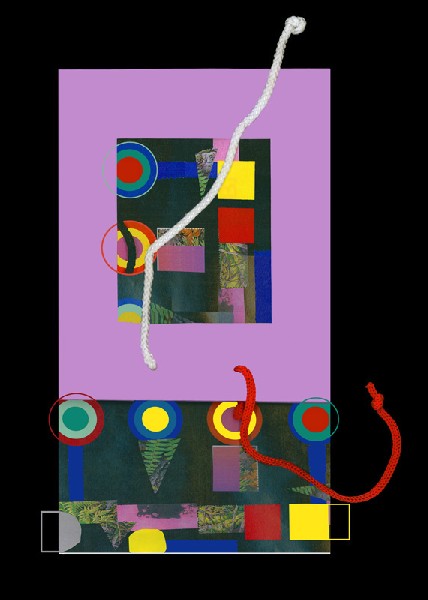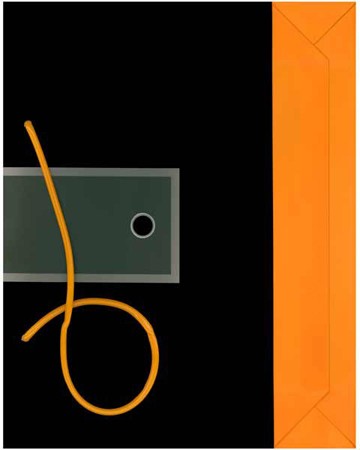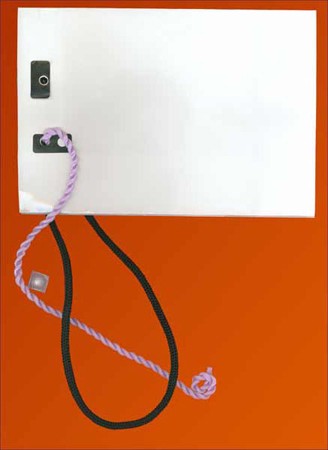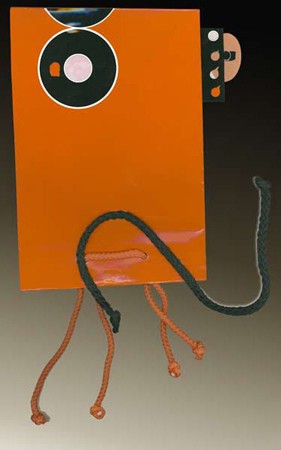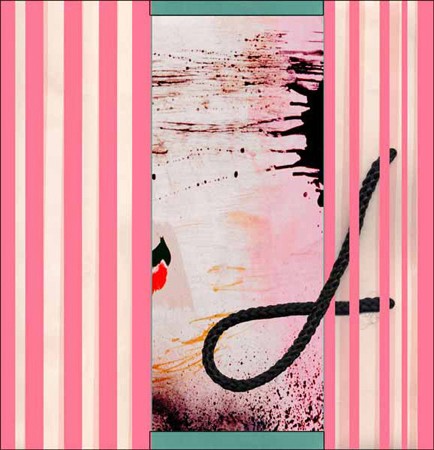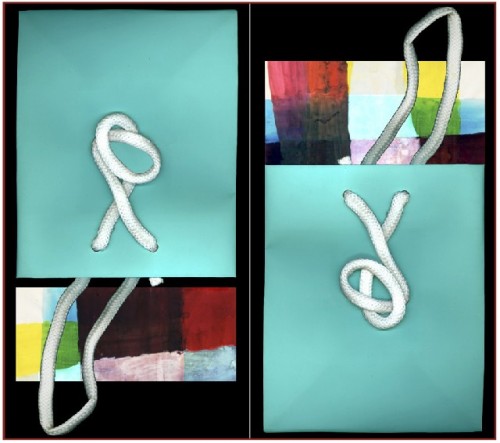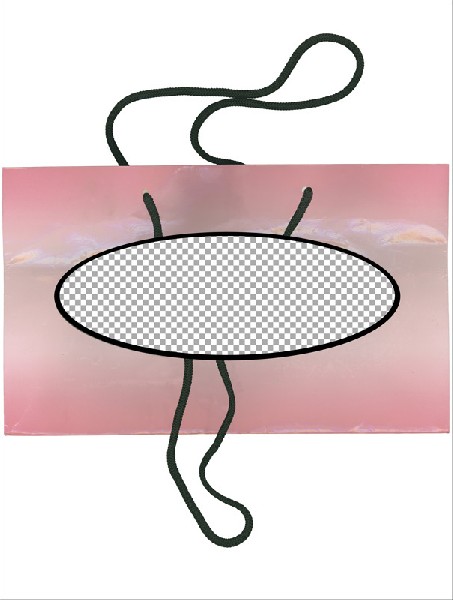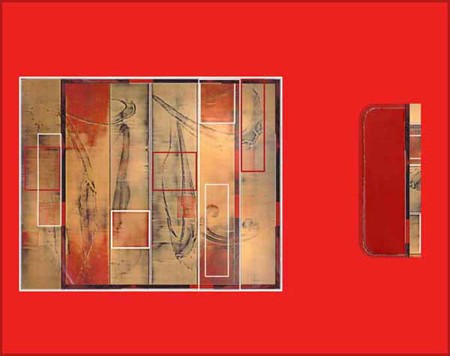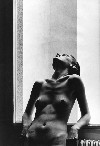Matuschka Maimed, Claimed and Famed
A Life and Career Defined by an Iconic Image
By: Charles Giuliano - May 21, 2013
In 1993 a riveting self portrait by Matuschka, a former model and artist, “Beauty Out of Damage” comprised a cover of the New York Times Magazine.
It was much discussed at the times including by women artist who were colleagues in the art school that employed us. I hadn’t seen it and wasn’t anxious to. As the son of a surgeon I had been exposed to many of his patients. It was a part of a failed campaign to have me follow in his footsteps. That backfired in a lifelong inability to cope with viewing the maimed and severely handicapped. Such encounters evoke visceral reactions.
Compounded by responses to the radical treatment of my mother for breast cancer while I was a college student. That winter I drove her to Mass General for weekly radiation treatments that left her scorched and in constant pain. There were other surgeries.
Mom was in her mid fifties then and died at 94. My older sister was less fortunate and succumbed to complications a decade after being diagnosed with breast cancer.
We met years later and I was drawn into Matuschka's life and career. Through Berkshire artists and photographers, Benno Friedman and Don Snyder, there were so many cross currents that connecting and working together was inevitable.
There were connectors but also differences, clashes of ego, vision, demands of time and energy. I was keeping too many balls in the air for the kind of involvement that a collaboration demands. That’s still true.
She was in the midst of developing a body of work involving the deconstruction of the exotic shopping bags of New York boutiques and department stores. They were emblems and trophies of Manhattan women who shop. Evoking a variation of Descartes self defined as “I shop therefore I am.”
In the bag series she started by deconstructing them for personal use as purses and tote bags. The logos, however, offended her and signified the materialism of our culture. She found ways to alter the shopping bags as pragmatic but fragile devices. An altered bag would only last so long before it succumbed to wear and tear and required a replacement.
Eventually, she came to view them as objects of beauty in and of themselves. Typically, if you get to know her, that entailed a total commitment from creating the objects, state of the art scanning, a book project, catalogue essay (that’s where I came in), as well as a complete image and identity makeover with a marketing campaign (never happened).
It got complicated culminating in an attempt to have a serious fact finding session in her uniquely designed apartment. That meeting was totally disrupted by her insane fucking parrot. It resulted in a potential catalogue essay so outrageous that it was never published. Until now. Seemingly safer and more historic after all these years.
As the curator of the New England School of Art & Design/ Suffolk University Gallery I planned to include her in a three person Bag Art exhibition. The other two artists were Peter Jamison, director of Ganondagan a 569 acre Historic Site and ancient home of the Seneca Nation. Peter paints totemic images on brown paper bags. The third was Mitsu a truly brilliant young Japanese student who had created a marvelously inventive installation using bags.
The show was fully developed but I ran out of time. I was about to finish the season before my retirement. Matuschka came and we had lunch with James Manning, my former assistant, who became interim gallery director. He had other ideas and never followed through.
We talked about that and other missed opportunities last weekend during the opening of her 40 year retrospective of figurative work at Sohn Fine Art in Stockbridge.
In the small space it was a dense and compelling experience.
By coincidence the exhibition is occurring precisely when, yet again, Matuschka is showing up on the radar screen. The media has focused on the decision of movie star Angelina Jolie to undergo elective surgeries to reduce the risk of breast or ovarian cancer. Genetic testing identified her as having a high probability of the disease. Her mother died young of ovarian cancer.
It was inevitable to ask Matuschka about the iconic image which is included in the Stockbridge exhibition.
“The reason that I did the cover of the New York Times Magazine in 1993 was because there was absolutely no publicity for breast cancer. AIDS was the disease du jour. Now breast cancer is the disease du jour. There was no publicity or information about mammograms. Nothing whatever about preventive medicine. Or any options. The photograph was intended to educate women. My mammogram did not show my tumor. Nobody ever said a mammogram may not show your tumor. I had a mammogram every year and thought, oh, I’m free of cancer. I wasn’t.”
Conflate this with your life and career. As an artist can you ever be more than that one shot?
“I would like to be. It’s maimed, claimed and famed me. Catapulted me into fame and stagnated me there. Nobody understands that I did all this work prior and have done all this work after. Because that picture got so much attention and still does to this day. People don’t even think I’m the photographer of that photograph. They assume that I’m the model.”
Standing in front of that iconic shot I asked her about it.
”It took me two years to make the photograph. First I designed the dress. A lot of the photographs are drawn first, like the plans of an architect for a house. I draw images that I want to take before I take them. I had the dress made and then went to different photographers and assistants. Richard Avedon rejected me. Everyone was putting bags over my head or my hands in front of my face. Nobody wanted to show me as happy, proud. Everything was supposed to look depressed and unhappy. That’s not my look.
“I had a woman who was my assistant and put her in the dress. She had the same body. This was in my apartment. I posed her and shot the light off the fire escape through a grid. This was the shot I wanted. So I took a Polaroid. Then I put on the dress and she helped me to make the photograph. This is a contrived very set up photograph. We only took three shots that day because I knew I got it. Because I saw it in the Polaroid. I don’t take a lot of photographs.
“It was shot exactly as you aren’t supposed to do. It was shot with Agfa film with tungsten lighting. That’s a no no. But because I know how to do prints the picture on the contact sheet was totally red. Using filters I color corrected and printed it myself in the dark room.
“There’s 40 prints in this size and 50 that are larger. I would become a millionaire if I sold out this edition. In 2003 a doctor e-mailed me and asked 'Can you send me a postcard of this picture?' He e-mailed me back and asked if I had a bigger one. I said yes, 16 x 20” and he asked how much? I sold it for $5,000. Then somebody else called and said “My father wants to buy your famous photograph.” I raised the price just a bit. Eventually I went to his house. He was the father of my assistant. I looked at the walls. There was a Mapplethorpe. A Bernice Abbott. A Patti Smith.
“I asked ‘would you mind telling me what you paid for the Mapplethorpe?’ An unknown Mapplethorpe for $20,000. And how much for the Patti Smith? (small using her hands as a frame) $3,000. I asked him, ‘do you mind my asking about the price of my work?’ He answered with two words ‘Too cheap.’ After all the books came out everyone says it should go for $25,000.
At Sohn Fine Art just $15,000 for the duration of the show and Cassandra Sohn the dealer adds “It’s a bargain.”
Moving about the gallery we talked about the work.
“That picture is from 1971. It’s the first picture I took and it’s a self portrait. Talk about irony. This picture was taken at Lake Buell by a collaborator. I was one of the well known regional models. Everyone wanted to photograph me because I had a stellar body. I was also an artist in art school. I became Benno Friedman’s model.
“I was a fashion model but with breasts which fashion models usually don’t have. This is a very Helmut Newton body. (Pointing to a nude from the 1970s.) If you notice the women (models) today, they have very long torsos and the breasts are positioned by the plastic surgeons high. This is a really typical Helmut Newton body. He and I didn’t get along.
“The great story is how I got into photography in the first place. I was with friends skinny dipping in a pond when I was about 16. A Hell’s Angels type group of motorcyclists came and we all jumped into the water. It turns out instead of Harleys they rode Hondas. A guy came up with a camera and asked if he could take a few photographs. I said yes under one condition can you send them to us? I posed with my hippy friends and I stood out like a statue. Once they saw the photographs everyone wanted to photograph me. I posed and learned to print before I took my first picture. I became a darkroom assistant to the photographers photographing me.”
Having that statuesque figure brought her work and financial support as a model. It also defined her own aesthetic vision. Often the model is not just the employee of the artist but also a collaborator and muse. There is a lot to be learned in the studio. Victorine Meurent, the model of Manet’s Olympia which scandalized Paris and defined modernism, under his influence and tutelage became a painter. Today she is of great interest to feminist art historians as muse and artist.
Matuschka learned a lot from the photographers she posed for not just as a model but as a studio assistant. One of those was the late Don Snyder who is only beginning to get the critical recognition he deserves.
“This is from 1982. Don Snyder, typically, lost the negatives. Twenty years after I took his contact sheets, scanned them, and made this design.”
She discussed the “Ruins series for which I was well known before cancer. This was shot in an apartment in my building which has since been renovated.”
There is a body of work that explores gender bending. “People often think I’m a guy. Because I’m so tall and gesture like a guy. I was the first female cab driver in New York at night. I still get the same reactions if people see me from the side that I’m tall and look like a guy in drag. I should have been a guy. No question about it. I would have been more successful.”
I asked about the Bags. “That’s my next show. They haven’t been shown yet. When are you going to show them? I have 1,500 copies of the book in storage so the catalogue is already ready.”
There we go again. The lady makes demands. Like most serious artists.
We parted the gallery. But Parrot Fever soon caught up with us.
Yet another senior moment.
I locked us out of the car with keys in the ignition and the motor running.
Call AAA right? My cell phone was dead. So was Astrid’s. It reminded me of my favorite episode of Sopranos with Christopher and Pauly Walnuts stranded in the woods with a dead car fighting over ketchup packets from McDonald’s.
That fucking parrot. Now she has three.
We have posted her response to Angelina Jolie. She tagged it and sent it to Facebook friends. It resulted in a flurry of “likes” and some responses which she forward to me.
1. Maxi, What you wrote is brilliant and so well stated. Basically we get all these cancers from environmental pollution, but instead of cleaning it up at the source we try and make money off it. Thank you for being another wise voice. Also, we would love to see your exhibit in Seattle some day. We have a lot of artsy folks here.
2. Thanks so much Maxi for your statement on this issue. I share all of your views. I wish the cover of Time featured THE MATUSCHKA EFFECT instead. I feel it would be much more realistic and honest for woman everywhere. I too immediately considered the male equivalent... sending you many hugs
3.Nice article Maxi. Most of my family dies from cancer. Both my parents had cancer (my mom had two different types) and many of my aunts, uncles, cousins have died from it too. My parents did all of the things you are suppose to do to avoid cancer; good nutrion (sp), regular exercise, social drinkers, and yet they didn't avoid cancer
4. Beautiful article, Maxi. I look forward to meeting you.
5. Very nuanced reaction, solid questions in it too. Maxi Matuschka is an artist whose photography-serie "Beauty out of Damage" (see http://www.beautyoutofdamage.com has greatly inspired me in 2009 for processing my cancerS by making my painting2cancers-illustrated online cancer-diary.
6. Great to hear your point of view on this!
7. Great article!!
8. I'm with you, Maxi- Good article .. I feel the same way after surving Breast Cancer, 24 years ago. Several years ago; Memorial SK did a study on this so called gene testing. I was asked to be a participant. I do not carry the gene, however my type of Breast Cancer was considered environmental.
EXHIBITION
Sohn Fine Art Gallery
6 Elm Street, Stockbridge, MA
April 26 - July 1, 2013
PRESENTATION & BOOK SIGNING
Saturday, June 22, 2:30 pm
Berkshire Museum
39 South St., Pittsfield, MA
Book signing "Bagit", "Life: 100 Photographs that Changed the World" and "Matuschka" to follow immediately after event.
Matuschka will discuss the themes of ruin and restoration, and her use of her body as a political metaphor at Berkshire Museum. A special showing of a short film illuminating the breadth and depth of Matuschka’s 40 year career will precede the talk.
Gallery Press Release
“A Body Biography" is a rare opportunity to experience this important work in a uniquely intimate setting and in the greater context of her decade spanning career. Additional works in the exhibition include mixed media photography, where Matuschka has “painted”, “toned” or “manipulated” her photographs, creating one-of-a-kind pieces that pay homage to her artistic expressions not only of photography but of additional medias as well. The extensive variety of work has one unifying theme running through it, “her body”, whether it is her first self portrait in 1971, her “Ruins” series from the 80s, the “Modified Radical” portfolio of the 90s or the “Androgony” series post 2000, the theme is re-interpreted from abstracts to portraits, both comedic and hauntingly beautiful.
A highlight of the exhibition will be “Beauty Out of Damage,” an unflinching and riveting self-portrait that rocketed Matuschka to international fame when it was featured on the cover of The New York Times Sunday Magazine in 1993. When first published 20 years ago, the public’s response to the image was so great that “Beauty Out of Damage” became one of the most controversial covers in The New York Times’ history. It was for this image that Matushka was nominated for a Pulitzer Prize and was chosen person of the week by Peter Jennings.
Her works are held by private and public collections through out the world, including the Center for Political Graphics, Cincinnati Museum of Art, Cooper-Hewitt National Design Museum, Flemming Museum, Hallisch-Frankischen Museum, Henry Buhl Foundation, Musee de l'Elysee, National Museum of Women in the Arts, Woodstock Center for Photography and the World Press Photo Foundation. Matushka’s university appearances include Harvard, Columbia, The Contemporary Museum of Art, Fort Lauderdale and The Art Cultural Center, Malaga, Spain. Selected publications include The Boston Globe, Chicago Tribune, Der Spiegel, Die Zeit, The Guardian, Glamour, MacClean’s, Marie Claire, Encyclopaedia Britannica, The New York Post, Time, The Washington Post and Vogue.
Matuschka reacts to Angelina Jolie



